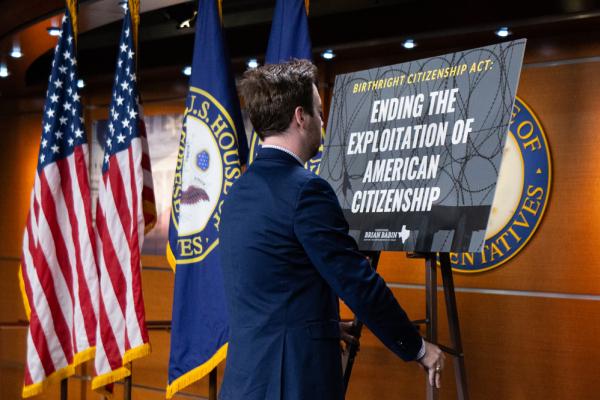Mennonite Church USA has introduced a curriculum of police abolition, as a way to apply the Anabaptist denomination's historic resistance of violence to the topic of policing in the United States.
“Police abolition is a process that requires communities to create alternatives to policing. We hope this curriculum will educate, inform, and transform our thinking concerning justice, mass incarceration and how we live in harmony as a society,” Glen Guyton, the executive director of Mennonite Church USA, wrote. “This process involves the deconstruction of preconceived understandings of policing.”
“Defund The Police? An Abolition Curriculum,” written by Melissa Florer-Bixler, Chantelle Todman, Ben Tapper, Kris Henderson, and Isaac Villegas, is a 10-week course. The team wrote it throughout 2020, after MC USA leadership felt there was a need for a church-wide discipleship and education in abolition.
“For [Mennonites] who are in [abolition] work already, this actually feels like it connects us to a generation ago when it was very clear that Mennonites could not be police officers,” Florer-Bixler said. “It’s only within the last generation that this has become less of a conviction for Mennonites.”
Police abolition and prison abolition — which are interconnected, though not entirely the same — are the pursuit of a world without policing or incarceration. Abolitionists envision different models of justice and community safety. Their work often involves questioning basic societal assumptions about the nature of policing and prisons, but abolitionists also work on programs like mutual aid, restorative justice, and initiatives designed to support people who are incarcerated.
In the last two years, abolition has attracted national attention, but the practice is about as old as the systems it opposes.
“The call for the abolishment of police, policing and the police state is not a new call,” the first sentence of the MC USA curriculum reads. “For centuries, Black and Indigenous people have called for the end of violence enacted on their bodies and communities by police.”
In a webinar introducing the curriculum, Chantelle Todman said the authors looked for Anabaptist resources on abolition, and finding little, set out to fulfill the demand for resources.
“This curriculum really was written in a place of urgency,” Todman said during the webinar. “But we really wanted to write something not just speaking to the urgency of the now, but calling us to faithfulness as Mennonites, as Anabaptists, and as Christians.”
The course is designed for use in small discussion groups, and each week contains a welcome video, instructions for facilitators, and activities for the group. Florer-Bixler said the goal was for anyone, regardless of their agreement with abolition, to be able to learn from the course and take a step closer to abolition.
“We wanted to help people understand that abolition isn’t this sort of utopian ideal that is something that can never happen, it’s something that we do,” she said. “It’s actually a collection of practices. It’s not something that happens all at once, it’s something that we gather over time.”
Ben Tapper told Sojourners that working on the curriculum was “a really rich experience,” and praised how long his co-authors had been doing the work of abolition. He said the group was accommodating to scheduling issues and helped each other stay grounded as they wrote the curriculum.
“It was a good practice in keeping values at the forefront, and keeping people at the forefront,” Tapper said. “Instead of letting the work drive us, we were able to drive the work.”
Some might wonder if, or why, a church curriculum is the right place for education in abolition work. Tapper said the answer is found when one considers that churches — especially in rural areas and Black cultures — are often still the bedrock of the community.
“The answer might shift depending upon the specific context a church or congregation holds within its community,” he said. “But by and large churches and congregations have both an opportunity and a challenge — or a call — to bear witness to history and to what has transpired.”
The cover image for the curriculum, a pop-psychedelic drawing of a community, was created by Dona Park, an artist based in Vancouver, Canada. She had previously been commissioned by MC USA for other work, and said it was her first piece of art focusing on abolition.
It would be easy to think that the art is meant to depict a world without police. In some ways it is, but the art better represents a community full of people who are thriving — a visualization of abolitionist Ruth Wilson Gilmore’s quote that “abolition is about presence, not absence.”
“As I discussed depictions for this curriculum with the editors, I completely agreed in creating a depiction of an ideal community,” Park told Sojourners in an email. “We need to continue visualizing what things could be, in order for them to be, to exist.”
Editor’s note: This article was updated on May 5 at 12:40 p.m. to correct Glen Guyton’s title. He is the executive director of Mennonite Church USA.
Got something to say about what you're reading? We value your feedback!







